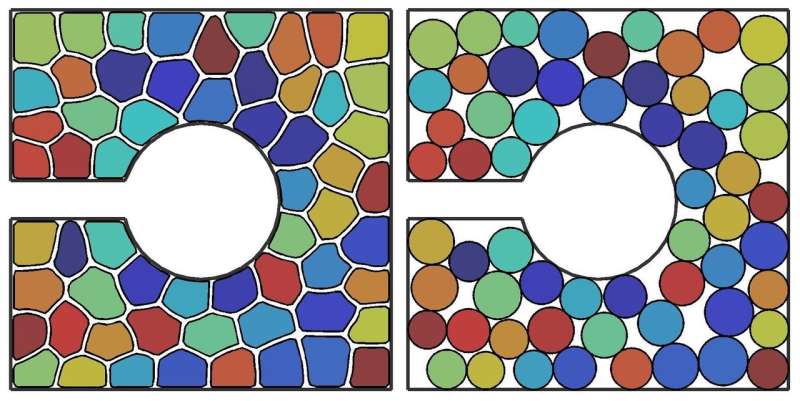Researchers make shape shifting cell breakthrough

A new computational model developed by researchers from The City College of New York and Yale gives a clearer picture of the structure and mechanics of soft, shape-changing cells that could provide a better understanding of cancerous tumor growth, wound healing, and embryonic development.
Mark D. Shattuck, professor of physics at City College's Benjamin Levich Institute, and researchers at Yale developed the new efficient computational model. It allows simulated particles to realistically change shape while conserving volume during interactions with other particles. Their results appear in the latest edition of Physical Review Letters.
Developing computer simulations of particles, such as sand grains and ball bearings, is straightforward because they do not readily change shape. Doing the same for cells and other deformable particles is more difficult, and the computational models researchers currently use do not accurately capture how soft particles deform.
The computational model developed by Shattuck and lead investigator from Yale, Corey O'Hern, tracks points on the surfaces of polygonal cells. Each surface point moves independently, in accordance with its surroundings and neighboring particles, allowing the shape of the particle to change. It is more computationally demanding than current simulations, but necessary to correctly model particle deformation.
"We now have an efficient accurate computational model to investigate how discrete, deformable particles pack," Shattuck said. It also allows researchers to easily adjust cell-cell interactions, consider directed motion, and can be used for both 2-D and 3-D systems.
One unexpected result from the model shows that deformable particles must deviate from a sphere by more than 15% to completely fill a space.
"In our new model, if no external pressure is applied to the system, the particles are spherical," O'Hern said. "As the pressure is increased, the particles deform, increasing the fraction of space that they occupy. When the particles completely fill the space, they will be 15% deformed. Whether it's bubbles, droplets, or cells, it's a universal result for soft, particle systems."
Among other applications, this technology may give researchers a new tool to examine how cancerous tumors metastasize. "We can now create realistic models of the packing of cells in tumors using computer simulations, and ask important questions such as whether a cell in a tumor needs to change its shape to become more capable of motion and eventually leave the tumor."
Journal information: Physical Review Letters
Provided by City College of New York


















